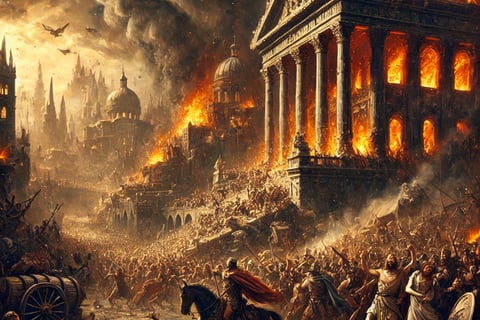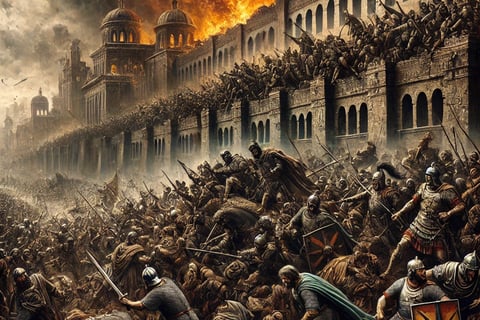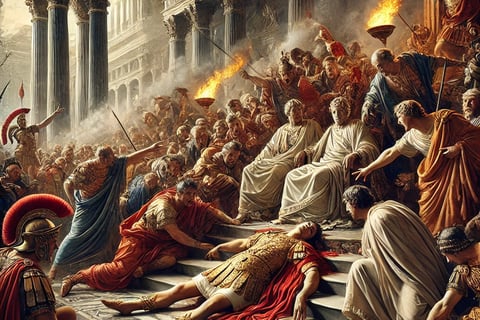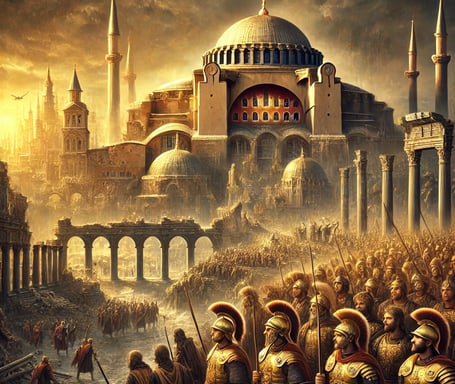The Fall of the Roman Empire: Unraveling the Causes and Lasting Impact
The Roman Empire, once the most powerful civilization in history, eventually crumbled under the weight of political corruption, economic decline, military struggles, and external invasions. Discover the key reasons behind Rome’s downfall and how its legacy shaped the modern world. Read this in-depth analysis of the empire’s fall and the rise of the Byzantine Empire.
Ahmad Shuja
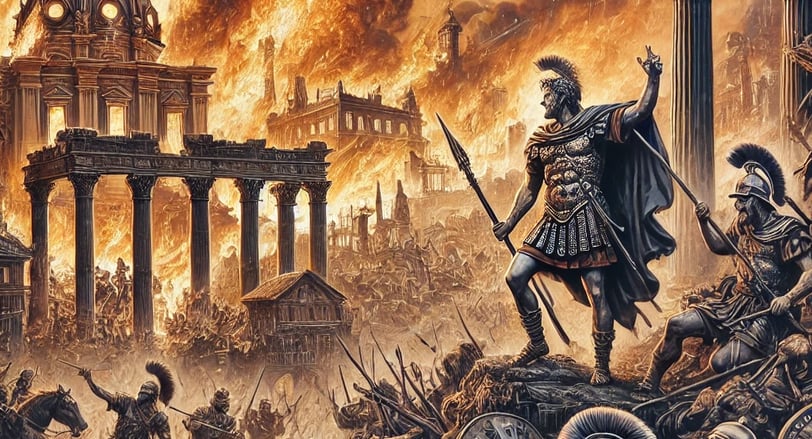

The Collapse of the Roman Empire: Reasons and Lasting Impact
Introduction
The Roman Empire, once an unparalleled superpower, ruled vast territories across Europe, North Africa, and the Middle East for centuries. However, despite its military strength, economic prowess, and cultural dominance, the empire eventually collapsed. Historians debate the reasons for its fall, but it is evident that a combination of internal weaknesses and external pressures led to its demise. This article explores the major causes behind the fall of the Roman Empire and its far-reaching consequences.
Causes of the Fall of the Roman Empire
1. Political Instability and Corruption
A major factor contributing to the decline of Rome was its prolonged political turmoil and unstable leadership. The empire suffered from frequent leadership changes, with emperors being assassinated, overthrown, or dying in battle. Between 235 and 285 AD, Rome had over 26 emperors, most of whom met violent ends. This constant power struggle weakened central authority, leading to inefficient governance.
Corruption was rampant in the Roman administration. Officials prioritized personal wealth over state welfare, and bribery became a norm. As a result, the government lost the trust of the people, and loyalty to the empire diminished.
2. Economic Decline and Inflation
The Roman economy, once flourishing, began to decline due to heavy taxation, devaluation of currency, and reliance on slave labor. The empire’s expansion had fueled its economy, but once conquests slowed, so did economic growth.
The excessive spending on military campaigns and luxurious lifestyles of the elite drained the treasury.
To cover expenses, emperors debased the currency by adding cheaper metals to gold and silver coins. This led to massive inflation, reducing the purchasing power of Roman citizens.
Heavy taxation crippled farmers and small businesses, pushing many into poverty and reducing overall economic activity.
3. Military Decline and Barbarian Invasions
The once-mighty Roman army deteriorated due to corruption, lack of discipline, and over-reliance on foreign mercenaries (Foederati). These mercenaries, mostly Germanic tribes, were not as loyal to Rome and often turned against it.
Meanwhile, Rome faced relentless invasions from barbarian tribes such as the Visigoths, Vandals, and Huns. In 410 AD, the Visigoths, led by Alaric, sacked Rome, marking the beginning of the empire’s final collapse. In 476 AD, the last Roman emperor, Romulus Augustulus, was deposed by the Germanic chieftain Odoacer, officially ending the Western Roman Empire.
4. Overexpansion and Administrative Burden
At its height, the Roman Empire covered 5 million square kilometers, stretching from Britain to the Middle East. Managing such a vast empire was an administrative nightmare.
The sheer size made communication and governance difficult.
Maintaining a strong military presence across distant borders was expensive and unsustainable.
The division of the empire into Western and Eastern halves weakened unity. While the Eastern Roman Empire (Byzantium) survived, the Western Roman Empire collapsed under pressure.
5. Social Decay and Loss of Civic Virtue
Roman society declined as its citizens became complacent. The once-disciplined and hardworking Romans indulged in excessive luxury, entertainment, and corruption.
Bread and circuses (free food and entertainment) kept the population distracted from real issues.
The decline in work ethic and civic responsibility led to lower military recruitment and weaker social cohesion.
The gap between the rich and poor widened, leading to social unrest and rebellion.
6. Christianity’s Influence
While Christianity brought new moral values, some historians argue that it contributed to Rome’s decline by shifting focus away from the empire's traditional martial values. The Edict of Milan (313 AD) legalized Christianity, and by 380 AD, Emperor Theodosius I made it the official state religion.
The Christian pacifist ideology discouraged military aggression.
Pagan temples and traditions were abandoned, weakening Rome’s cultural identity.
Religious disputes and conflicts further divided the empire.
Consequences of the Fall of Rome
The collapse of the Western Roman Empire had profound and lasting effects on Europe and the world.
1. The Beginning of the Dark Ages
With the fall of Rome, Europe entered a period known as the Dark Ages (476-1000 AD). This era saw a decline in literacy, trade, and centralized governance.
Infrastructure, such as roads and aqueducts, fell into disrepair.
Knowledge and scientific advancements stagnated.
Small feudal kingdoms emerged, leading to constant warfare and instability.
2. The Rise of the Byzantine Empire
Although the Western Roman Empire collapsed, the Eastern Roman Empire, later known as the Byzantine Empire, endured and flourished for centuries. Centered in Constantinople, it preserved Roman law, culture, and traditions for another 1,000 years until it fell to the Ottoman Turks in 1453 AD.
3. The Formation of New European Kingdoms
After Rome’s fall, Germanic kingdoms such as the Franks, Visigoths, and Ostrogoths took over former Roman territories. These new kingdoms laid the foundation for modern European nations.
The Franks eventually formed France under Charlemagne.
The Anglo-Saxons established the early foundations of England.
Spain saw the rise of the Visigothic Kingdom.
4. The Influence on Modern Governance
Despite its fall, Rome’s legacy endured in legal and political systems. Roman law influenced modern legal codes, and concepts like senates, republics, and citizenship continue to shape governments worldwide.
5. The Expansion of Christianity
Christianity, which had become Rome’s official religion, continued to spread. The Catholic Church emerged as the dominant institution in Europe, filling the power vacuum left by Rome’s collapse and becoming a major political force.
Conclusion
The fall of the Roman Empire was not caused by one single event but rather a series of internal weaknesses and external pressures. Political corruption, economic struggles, military decline, and social decay all contributed to its downfall. However, its legacy remains evident in modern governance, law, architecture, and culture. The lessons from Rome’s decline serve as a reminder that no empire is invincible, and even the greatest civilizations can fall if they fail to adapt and address their internal problems.
